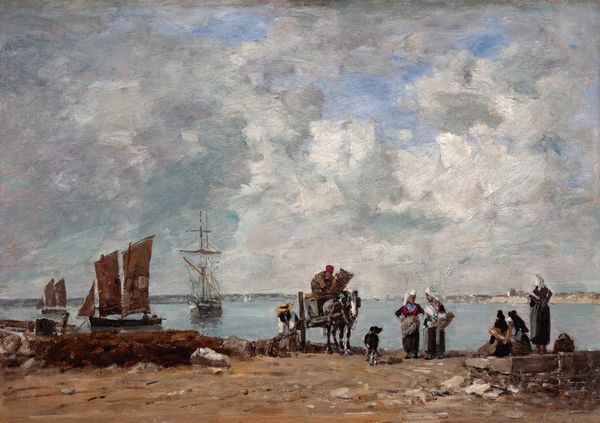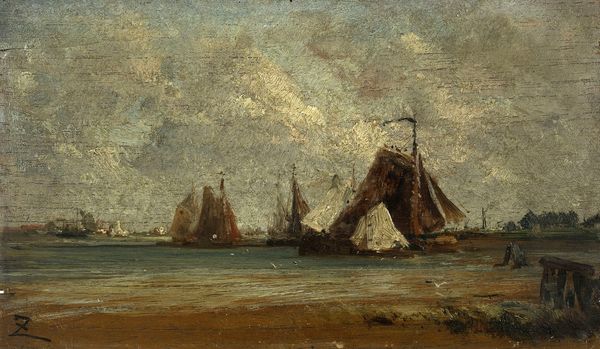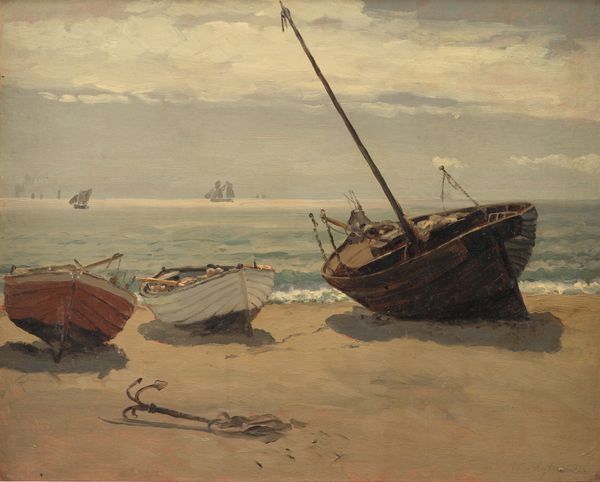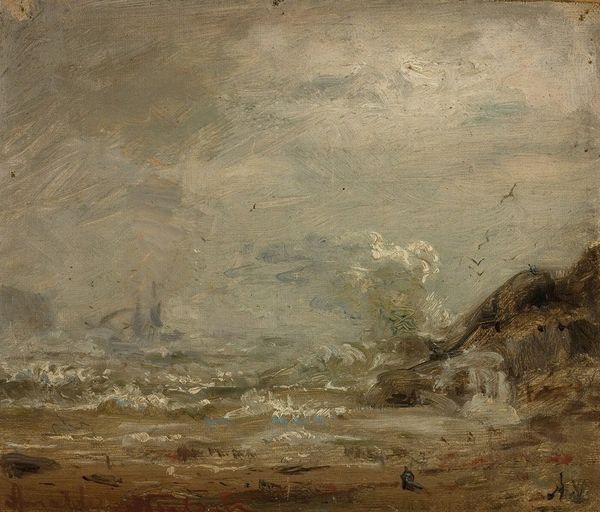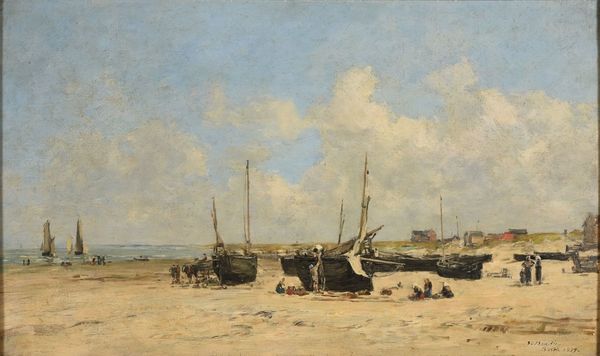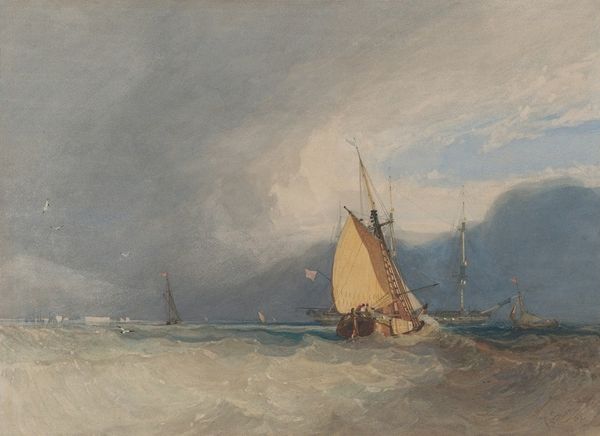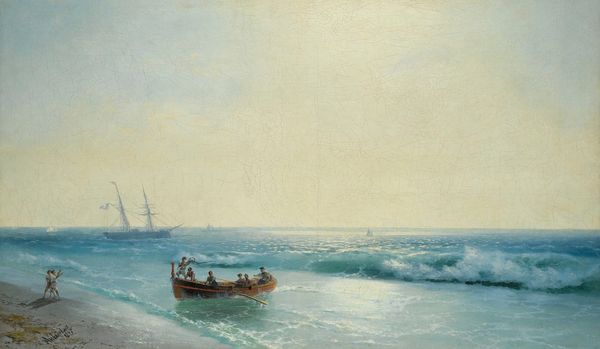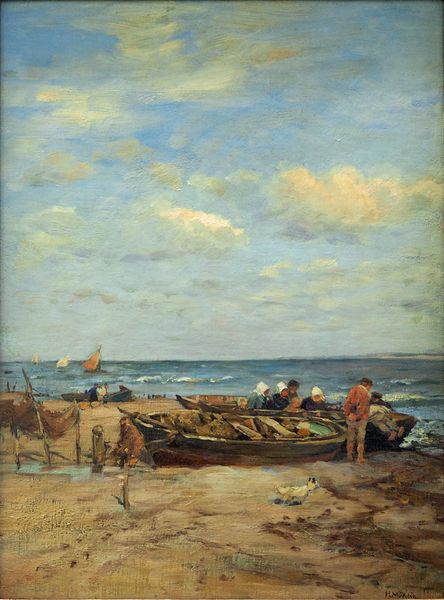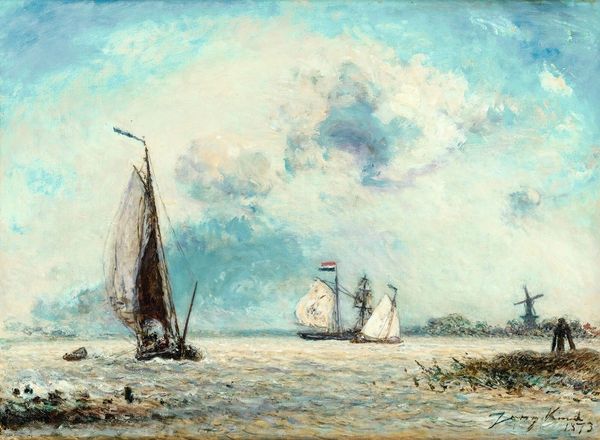
plein-air, oil-paint
#
plein-air
#
oil-paint
#
landscape
#
oil painting
#
romanticism
#
cityscape
#
genre-painting
#
realism
Copyright: Public Domain: Artvee
Curator: Here we have John Constable's "Coast Scene Near Brighton," painted sometime between 1824 and 1828. He rendered it in oil paint, likely en plein air, which was quite novel at the time. Editor: It certainly captures a specific mood. The turbulent waves and the bulky boats pulled ashore…there’s a feeling of the awesome power of nature against the industriousness of humankind. Somber, almost. Curator: Well, Brighton was becoming a hugely popular resort at this time. We see this tension quite often—Constable's romantic appreciation for the natural world juxtaposed against the realities of 19th-century life and coastal development. These fishing boats wouldn’t be there without Brighton's specific economic realities. Editor: The boats themselves, pulled so far up the shore…they’re practically beached whales, aren't they? Massive and earthbound. Is that a figure in red perched atop one of them? It reads almost like a drop of blood, accentuating the sense of vulnerability. The scene presents such potent symbols! Sea for change and unpredictability, the boats for hard work, human insignificance… Curator: Indeed. Red often signifies urgency or warning, drawing the eye and underscoring its presence, much like the Industrial Revolution itself was becoming impossible for people to ignore. While celebrated for his romantic depictions of nature, Constable’s works weren't without a kind of political subtext regarding landscape transformation. Think of him painting while progress constantly transforms England around him. Editor: So the very act of painting outdoors became a kind of social commentary? Curator: Perhaps a document of disappearing natural landscapes. I believe he certainly wrestled with how modernization reshaped England and the aesthetic expectations surrounding pastoral life. These symbols may well represent cultural anxiety around such shifts. Editor: This conversation enriches my reading significantly. It’s not just a beach, but a historical document painted with emotive symbols! Curator: I quite agree! Analyzing art through historical and iconographic lenses can enhance our perspective tremendously.
Comments
No comments
Be the first to comment and join the conversation on the ultimate creative platform.

